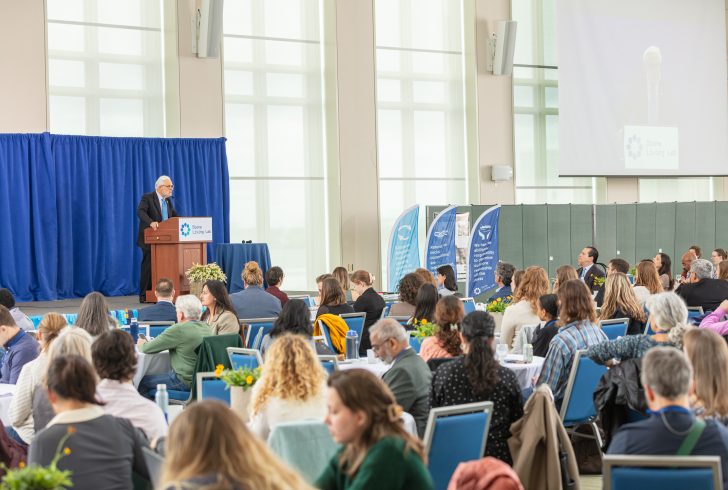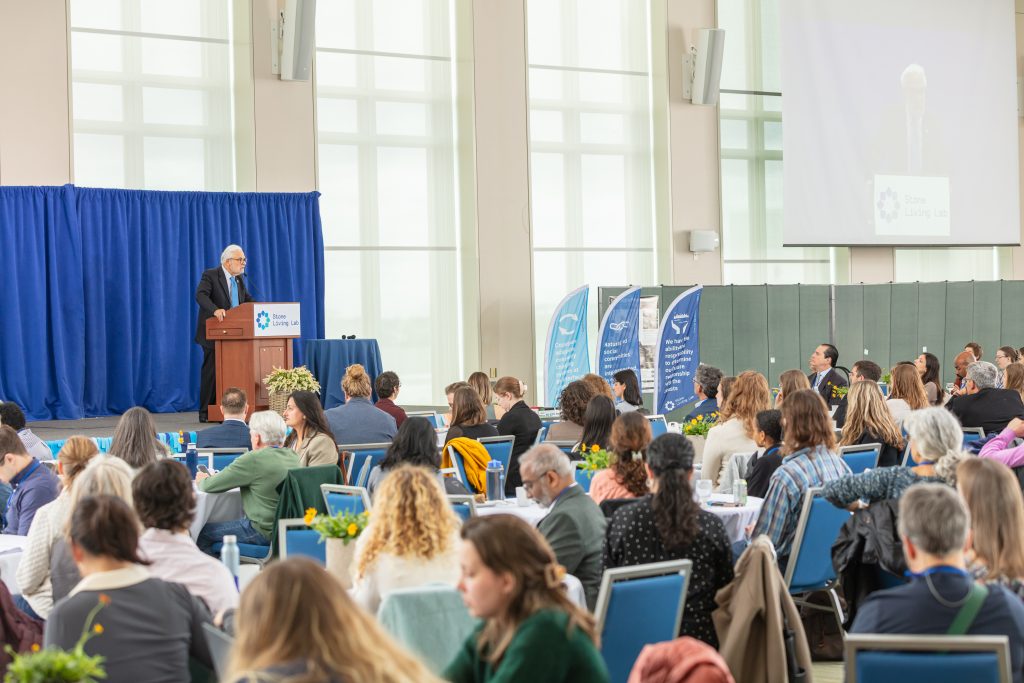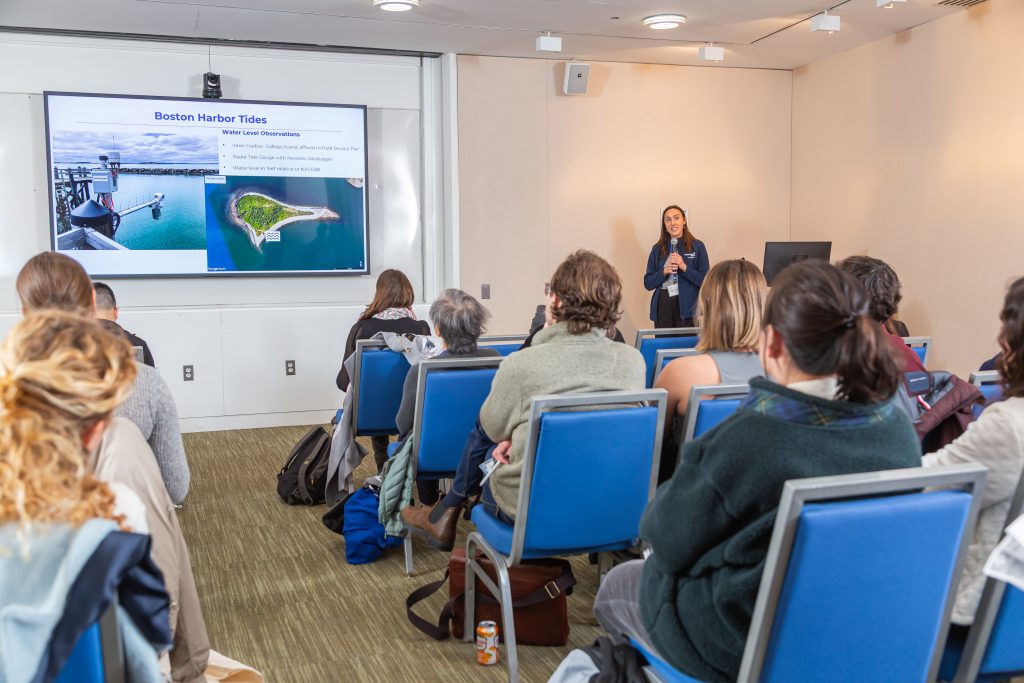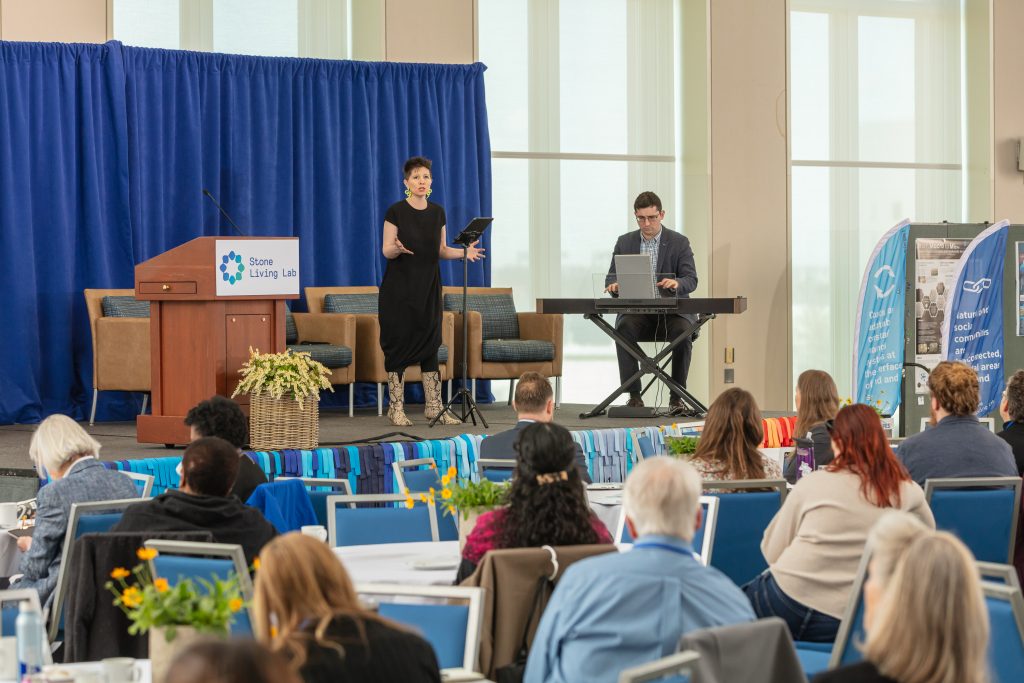Experiencing the SLL 2025 Conference


By Tessa Peixoto
“Resilience” is the power to persevere in the face of setbacks. So when you enter a coastal resilience conference aimed at pooling knowledge and sharing best practices, you can’t help but feel resilient.

The Chancellor of UMass Boston opened the conference with a grounded and timely reminder: “When there is no hope, we invent it.” (a quote inspired by Albert Camus). In an era marked by rising seas, ecological uncertainty, and social turbulence, his words reminded us that resilience isn’t just something we apply to coastlines, we’re part of where that strength starts.
Pick a room, any room
Racing between panel sessions and breakout rooms, I found myself moving across disciplines: engineering, computer science, ecology, canvassing, and more. It felt like stepping into a living map of the many ways people are responding to climate change. One session that caught my attention featured a flood monitoring sensor called Hohonu. What began as a simple endeavor to track tidal changes has now expanded to 15 U.S. states to track flooding, including Massachusetts, where they partner with the Stone Living Lab. Even better, there is a public app that gives access to over two million hours of water level data. Now you have the power in your hands to know if your local area flooded and for how long after that heavy rain. As someone who lives in a city where sea level rise is more than just a statistic, I actually felt my shoulders relax. It is not just that someone built this, it is that we are already using it. That kind of momentum gives me hope.

From solutions like Hohonu to more industry-driven innovations, it was clear that responses to climate change span all sectors. Moving from the public to the private sector, TetraTech showcased how they leverage machine learning and artificial intelligence to enhance inundation monitoring along railway tracks. By applying these advancements to a railway system that spanned the length of the North American continent, they have significantly reduced derailments, saved millions in repairing costs, and provided more lead time to reroute trains. While not directly solving climate-related risks, these innovations demonstrate how industry can adapt while not compromising on the bottom line.
As I got more entranced with the discussions, I was reminded of a physics lesson: How everything holds potential energy until something sparks it into motion. These projects had that spark. They were already moving, already making changes. The Micro Neighborhoods Alliance (MNA) in Provincetown, Massachusetts found its spark when they noticed severe storms compounded by the push for coastal adaptation decision making, was leaving their neighbors paralyzed with fear. In just one year, since launching in 2024, the group has stepped in to help residents navigate complex environmental regulations and property issues. Sometimes, what you need most is a human being on the other end of the phone, or sitting beside you in a workshop, to remind you that you are not alone. MNA is just that person.
Resilience is just as much about local solutions as it is about global impact. This conference proved that again and again. One powerful example came from Bobuchi Ken-Opurum, who sought out to document nature-based solutions in the Global South. She identified over 150 bottom up strategies, drawn from stories and research across more than five languages. As someone who grew up in Sao Paulo, Brazil, her session title hit exactly on target for my experiences with changing weather patterns back home: “Your Car is Floating, You Can’t Get Into Your House”. Her work was applied in Nigeria, which led to a model that considers what an individual household is facing and matches it with the best combination of solutions from her growing database. It was research that demonstrated that inclusive progress often starts with listening to lived experiences and should be rooted in community expertise.
The power of every voice
This was only the second time that Stone Living Lab hosted this conference in-person, yet it already feels like a vital gathering of professionals and community members asking big questions about how we adapt to and mitigate the changes ahead. Not everyone at the conference was a climate scientist, and that was part of the beauty. Everyone has a role to play in building resilience. One unforgettable example was The Boston Lyric Opera’s performance of Rising Waters / Rising Voices, a moving piece designed to stir action through art. It emphasized that hope has to be felt, not just calculated, and that creativity is part of the climate solution too.

With hundreds of people flowing through the UMass Boston Campus Center in a span of three days, it was easy to feel the time crunch. So many people to meet, and not quite enough hours. Thankfully, the organizers built in thoughtful networking opportunities throughout the schedule. From early breakfasts and snack breaks to evenings out at Boston Winery, there were plenty of chances to meet passionate attendees and turn new connections into real friendships. As every break began, a buzz of conversation filled the space, people leaning in to learn more about each other’s work, tables quickly filling with potential partners.
The conference served many purposes for different people. Some came to scout collaborators, others to stretch beyond their areas of expertise, build networks, or simply seek answers to their burning questions. I’ve been to conferences where judgment lingered beneath the surface, but Stone Living Lab 2025 conference felt refreshingly different: collaborative, and open. From hyper-local efforts to global initiatives, the projects reflected a shared truth, the environment knows no constitutional borders, and one person’s success in protecting or restoring it is a win for us all.
Tessa Peixoto is a marine biologist, science communicator, and social media coordinator for a sustainably-harvested local seafood company. You can learn more about her work at https://www.linkedin.com/in/tessapeixoto.